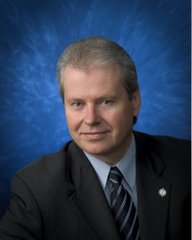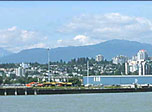The April 28, 2025, Canadian federal election unfolded as a
gripping drama. The Conservatives,
advocating for ‘change’, were poised for a victory, but the voters surprised
everyone by choosing a familiar path with a Carney twist. The Liberal Party, which had been on the
brink of collapse under Justin Trudeau, experienced a remarkable resurgence
with Mark Carney at the helm. In a
nail-biting finish, the Conservatives, led by Pierre Poilievre and enjoying a
significant lead in the polls, were narrowly overtaken at the finish line.
Traditional third-party NDP support had been gradually dissolving,
eventually coalescing behind their nearest policy cousin, the Liberals. Their previous ‘confidence and supply
agreement’ with the Liberals started the disaffection, but a likely
Conservative election win sealed the fate, when many NDP voters held their nose
and voted Liberal.
The result was a significant victory for the Liberal
government, which secured 43.5% of the popular vote, the best showing since
1980. The Conservative opposition
secured 41% of the vote, and the decimated NDP marked a clear shift in the
political landscape.
In the 343 seat House of Commons, the Liberals secured 169, just three short of a majority
in the House of Commons. Pierre
Poilievre’s Conservative Party followed with 143 seats, even though he lost his
parliamentary chair to a Liberal upstart. That problem will soon be solved in a by-election.
The regional Bloc Québécois from Quebec won 23 seats and
finished third. Led by Yves-François
Blanchet, the Bloc ran its usual separatist campaign based on Quebec’s autonomy
and cultural pride but lost strength to the Liberals. The New Democratic Party dropped to just seven
seats, with leader Jagmeet Singh losing his riding, and the Green Party held
onto a single seat.
The 2025 Canadian federal election witnessed a significant
surge in voter participation, with 69% of registered voters casting their
ballots. This marked the highest voter
turnout since 2015, signaling a heightened level of political engagement among
Canadians.
Two events framed the election: Trudeau’s resignation and
Donald Trump’s return as the U.S. President. Together, these events changed the ballot
questions, turning a contest about the faults of the Justin Trudeau
administration into an image-impression contest over who might best deal with
Donald Trump’s insults and tariff threats.
Some post-election observations can be made.
McLuhan's insight was that the media is the message. This was a phrase coined by the Canadian
communication theorist Marshall McLuhan and the title of the first chapter in
his 1964 book ‘Understanding Media: The Extensions of Man’.
The media, particularly social media, played a pivotal role
in the election. Pierre Poilievre
strategically leveraged platforms like Facebook, X, TikTok, and YouTube, using
viral videos and catchy slogans like “Axe the Tax” to rally voters around affordability
and housing issues. Some even speculated
that Poilievre could be the first social media personality to ascend to the
position of Prime Minister. In a
departure from tradition, the Conservative campaign largely bypassed
traditional mainstream media, viewing them as adversaries rather than allies.
In contrast, Mark Carney took a traditional approach,
building relationships with legacy outlets. Older voters still consume legacy media news, contributing
to some of the Conservatives' loss of support.
Carney’s droll media image benefited from legacy media’s
favourable coverage, highlighting experience and stability in contrast to
Poilievre’s alleged confrontational style.
Carney’s dominance in legacy media helped frame the election as a choice
between uncertainty and predictability, or perhaps risky change for
competence. Papa Carney would take care
of you. The election reaffirmed the
importance of a multi-media strategy that has social media reach undergirded
with traditional sources.
Carney seemed for many to be the right kind of guy for the
moment. Carney had never been elected or
tested at the political level, so there was somewhat of a blank slate, which
voters could then ascribe to him whatever they subconsciously needed. He appeared to have a strong resume from the
Bank of Canada and the Bank of England that projected competence during a
crisis. Carney offered a deliberate
blend of pseudo-professionalism that reassured rattled voters.
Trump’s election, Trudeau’s demise, and replacement changed the
ballot choice. The legacy media played a
pivotal role in shaping the narrative, making full play of every question for
the Conservatives, and glossing over the reality of the real Mark Carney.
The Conservatives had built solid, hard-won support by
crossing the country with a clear campaign repeating memorable slogans such as
“Axe the Tax,” “Build the Homes,” “Fix the Budget,” and “Stop the Crime.” The slogans were based upon ready legislation
and detailed administrative policy changes that the Conservatives promised to
implement quickly.
Poilievre’s opening theme boldly stated the obvious reality
for many: ‘Canada was broken.’ Voters
were exhausted from the Liberal government’s inept and erratic rule during
COVID-19. Canada also had a housing
crisis made worse by a Liberal administration that allowed too many immigrants
within a year. Inflation and crime were
significant disenchantments. The colossal
national debt and mounting interest payments were very worrisome.
When Chrystia Freeland resigned as Finance Minister on
December 16, 2024, just before she was to deliver the fall economic statement,
it was a direct fatal move against Prime Minister Trudeau. During the Christmas break, the Liberal Party looked
like it was dissolving in the polls, with Poilievre’s Conservatives with 45%
support, 21% for the NDP, 16% for the Liberal Party, and 11% for the Bloc
Québécois. Trudeau was forced to resign on
January 6, 2025. Mark Carney soon
emerged from the political mess as the replacement Prime Minister.
Donald Trump's return to the White House and the launch of a
trade war were traumatic and enraging experiences for Canadians. Trump’s musing that Canada should be the 51st
state of the USA was the supreme insult. This led to a surge of nationalism, with
Canadians boycotting USA-made products and cancelling cross-border travel,
highlighting the tension and uncertainty in Canadian politics.
In response to the Trump challenge, Carney’s first acts were
to scrap the consumer part of the carbon tax and reverse Trudeau’s capital
gains tax hike, thus signalling a policy shift.
He borrowed the Conservative policy goal to realize Canada’s constitution
as one economic unit. In an emotional response,
Canadians overwhelmingly supported political talk of tariff retaliation.
Carney then visited the leaders of England, France, and the
European Union instead of Donald Trump. The
political image-making was clear, and Carney was doing the obvious. Canada must become less dependent on the
unreliable USA. However, Carney required
political legitimacy for his leadership, so he duly called a national election
for April 28th.
During the federal election, the Conservatives called for
‘change,’ but voters did not care much about carbon taxes, Justin Trudeau, or
policy slogans. They became rather vaguely emotional about who would comfort and
protect Canada in a time of sudden uncertainty.
Carney played the fear card and warned repeatedly that Trump
“wants to break us so America can own us.”
This new political drama put the Conservatives in an undefined position.
The truth for Canada was our internal
governance, the failures of the Liberal political philosophy, and the many internal
practical fixes and policy changes that were greatly needed.
However, many voters seemed spooked and simply opted for the
easy answer: comforting Mark Carney. Compared
to Poilievre’s assertive style, which he had used to wake up Canada and say
that help and relief were on the way with ‘change’, voters saw Carney as the comforting
daddy ‘adult in the room’.
No matter how Poilievre tried to place Carney into the Justin
Trudeau narrative, fear and comfort without reflective analysis carried the Liberals
forward. When asked why voters chose, it
was never about reading a Party platform.
Few could cogently state anything Carney promised about a future vision
or plan for the country when directly questioned. Liberal voters had a vague impression that
their best bet was with Carney because of Trump. The new version of the Liberals also allowed political
denialism of what the Liberal Party had done to Canada. Reactive support for Carney allowed past political
sins to be suppressed and forgotten.
Poilievre’s inability to pivot politically in his message was
the chattering class's narrative. They did
not hear or want to listen to the relevant policy message that Canada had to
get its own house in order to face all challenges, whether they be Trump or
other international economic shocks.
Poilievre’s Conservatives campaigned for years on
anti-carbon tax and anti-Justin Trudeau political philosophy. As Poilievre’s points scored home, the defense
was that his rhetoric often echoed Trump’s populist slogans. Since admission of guilt or policy change would
not be forthcoming from Liberals, the response was a smear about Poilievre’s style
rather than substance.
However, Poilievre adapted with a ‘Canada First’ message. His reminders about the cost of living, high
taxes, and crime didn’t break through the voter fog until the campaign's last
week, when Conservatives appeared to be gaining momentum, but it was somewhat late.
Pierre Poilievre created a larger Conservative coalition,
but in the process, he pushed most NDP voters into the arms of Mark Carney. That is the backhanded Liberal explanation. In truth, NDP voters were becoming disenchanted,
but they had lived for generations on false anti-conservative myths and resentment. The NDP's collapse was mainly internal, eventually
unfolding into a two-party contest. The
NDP voting coalition with the Liberals had made them both accountable for the administrative
record of failure.
If Canada evolves temporarily into a two-party format,
Poilievre must heal some relationships and further broaden the Conservative
base. The 2025 election wasn’t just a
contest of parties or political philosophies—it was a contest of tone and vague
leadership style in a world turned upside down by Trump.
When Canadians were forced to choose between a combative
populist who uncovered the sins of the mighty, and a calm technocrat ready to
provide a haven to cover shame, many chose the myth of stability and comfort wrapped
in a renewed love of our flag.
The outcome was a rebalance in voting patterns and the
temporary emergence of a two-party focus, with a stronger Conservative movement
and a resurrection of the Liberal Party. It was image over substance.










4 comments:
Well said Paul. An unusual election. With a little more polish and statesmanship, Polievre is well positioned to be next Prime Minister. He has the votes.
A great analysis. Cogent comment that “Papa Carney would take care of you.” The difference came down to non-policy imagined images. You nailed it by saying that many could not describe why they voted for Carney.
I think you are on to something, that assertive over-stating the virtues of Carney, was about the denial of guilt and shame with false bravado. The Liberals were so down and grieving for their Party’s reputation that when Carney came along, it was a rush to the front row of the performance, to forget grief and drown their shame for what they had done to the country. The NDP also gave them an unearned gift of self-immolation, as their deal with the devil always had a wage to pay in the end.
Wow! You hit the nail on the head! That is very insightful and accurate. The media fuelled the fear while Carney carried the match. I don’t understand how Carney can just show up on the scene from another country, flaunt his lengthy résumé and Liberal Canadians could swoon over him, disregarding that that his résumé is followed by economic collapse, and disregard that the great majority of the Liberal Cabinet are the same ones who helped lead Canada into its economic, crime, immigration and housing crisis .
That being said, there were many other electoral districts that had record turnouts and Conservative results! In the advanced polls, Essex ranked #3 NATIONALLY for voter turnout!
Essex Conservative MP Chris Lewis received an outstanding, record-breaking 46K+ votes! Windsor had not held a Conservative seat in about 100 years. Windsor-West was a longtime NDP stronghold and turned Conservative for the first, placing the NDP in 3rd place!
Windsor-Tecumseh was another lifetime NDP-Liberal stronghold, and for the first time shifted to Conservative!
Being one of the busiest international border crossing regions in the Deep South of Ontario with very strong manufacturing ties and strong impacts of the tariff war, it’s clear they trust the Conservatives led by Pierre Poilievre in these uncertain times. It’s very unfortunate that the rest of Canada didn’t agree.
Post a Comment